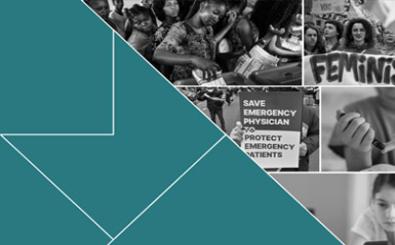When I opened Adweek’s March 4 edition on the plane this past Monday, I was surprised to see an article titled, “Don’t Call It Advertorial,” by Lucia Moses, which described a new “marketing service to produce bespoke editorial content for advertisers” called Fortune TOC (Trusted Original Content). The plan was to have “trusted freelancers” create quality content that would be a step above advertorial and edited by Fortune senior staffers “without compromising editorial integrity.” The content would appear “exclusively for marketers to distribute on their own platform,” not on the Fortune site. Jed Hartman, group publisher of Time, Inc. is quoted, “They (the advertisers) like the brand rub-off and they like the exclusivity.” I confirmed yesterday with a senior source on the journalist side at Fortune that this program will not proceed.
Meanwhile, The Washington Post announced that it would allow marketers to have sponsored content on its home page. The material could come from the marketer or from staff working on The Washington Post advertising staff, according to Josh Sternberg’s piece in Digiday, without involvement of the editorial team. I spoke yesterday with Katharine Weymouth, publisher of The Post, who confirmed that Brand Connect is part of a larger strategy to form deeper relationships with marketers, including sponsorship of conferences, special inserts and cross-platform offerings including sister publication Slate.
So how can PR people play in this fast-evolving world of mainstream media? I got good advice at lunch yesterday with a major client. “Bring me big, creative ideas. I am not getting them from the ad agency. Give me the chance to evaluate content partnerships with media companies. Give me something that I can build on for the next five to 10 years – I am not interested in short-term sponsorships only. Tell me how I can reach influentials.”
Every one of our clients will need to become a media company; skilled in presenting its own story, attracting eyeballs as a credible source on subject areas in which they participate. As part of this effort, smart PR people will forge connections between publishers and clients that allow both to benefit. A good example is the program that we have created for Dairy Management* with The Washington Post.
The Post organized a symposium for opinion formers in Washington last summer, titled: “Future of Food: Food Security in the 21st Century,” including speakers such as Secretary of Agriculture Tom Vilsack, FEED Project CEO and co-founder, Lauren Bush and Land O’Lakes CEO Chris Policinski. The discussion carried far beyond the room with multiple content extensions, including a Washington Post Live livestream and Twitter hashtag (which organically trended to No. 2 globally). A special insert on the event and food security topic was included in The Washington Post print edition, and this piece was shared with dairy farmers and partners. To further reach informed consumers, Dairy Management sponsored a related article series on Washington Post owned Slate.com, highlighting topics including on-farm production and sustainable nutrition. Dairy Management partnered with The Post on an influencer dinner the night before the event.
We have also initiated Dairygood.org, an owned media property for the dairy industry, which offers views from multiple stakeholders ranging from farmers to consumers.
We have created a physical on-site newsroom in Rosemont, IL where an editor/producer, community manager and analyst act as the core team and work with other content producers. This is currently staffed between DMI and Edelman employees. Each day the team reviews industry news and determines what content to produce. A great idea was the simple graphic the editorial team produced for Valentine’s Day, which got hundreds of shares across social media.
Or, there are more text-rich original content pieces, including one written by a Missouri dairy farmer.
The editorial team has produced infographics and visuals to accompany articles, and as the newsroom matures, it will eventually do more with video. Each piece that gets published gradually builds the audience and helps the content teams refine their content development and strategy.
We need to be the smarter point of connection between media and client than the ad agency or media buying firm. We may not have big advertising budgets to wave around but our content can shine through as much more compelling and connected. We should not simply be a funnel through which media present their properties, we should be a true intermediary offering value to both clients and media.
Richard Edelman is president and CEO.
*Edelman client



